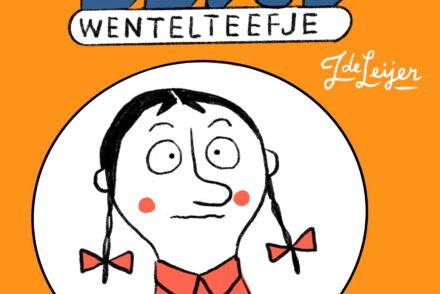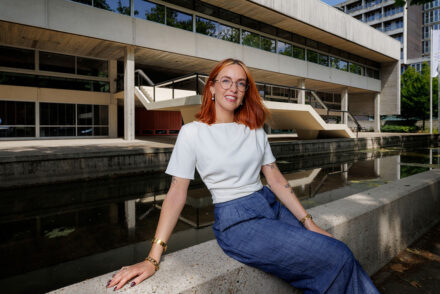Do students have a better education now? No one knows
Since the introduction of the loan system, millions have been invested in Tilburg University’s education. First by means of the pre-investments and then by means of the revenues from the student loan system. Very nice of course, all that money pumped into the university, but has it also yielded anything? Is education for the student anno 2022 effectively better than that for a student in 2015?

Lees dit artikel in het Nederlands.
With one smooth digital sliding motion, Queen Maxima declared the Jheronimus Academy of Data Science (JADS) in Den Bosch open. She thus served as the capstone of a spectacular opening ceremony that took place on December 1st, 2016, in and around the Mariënburg Monastery, home to the new academy. Invited guests were treated to a real laser show, combined with lots of music and dancing.
Enthusiasm abounded that evening. JADS, a partnership between Tilburg University and Eindhoven University of Technology, was to become the new flagship of the universities. The institution was to become a forerunner in the field of data research and a pivot in this data-driven society. It also created new educational opportunities in the form of four new degree programs, including one Bachelor’s and three master’s programs.
The need for data scientists and specialists in this day and age is evident. The added value of the new institute is thus indisputable. What is fodder for debate, however, is whether the JADS, which gobbled up a significant portion of Tilburg’s pre-investments, has led to an increased quality of education for the Tilburg students who lost their basic grant as of 2015. Did it improve their education?
No unambiguous answer
The university claims it does. After all, the new programs provide additional choices for students and are characterized by interdisciplinarity, a skill that is important in solving contemporary issues, thus aligning with the university’s motto – Understanding Society.
There is, of course, something to be said for this. At the same time, one wonders to what extent a broadening of education is actually an improvement. For example, students who have chosen a completely different specialty than data science – and there are quite a few at Tilburg University – experience little benefit from such a horizontal expansion. In the words of Jeroen Wienen, former Council member for SAM: “What does it benefit the majority of students if a select few are collecting data somewhere in an old monastery?”
Besides the fact that the study program serves only a specific type of student, concerns have been raised in the past that JADS would have its impact on already existing education. During the July 4, 2016 University Council meeting, student party SAM expressed fears of an increasing burden on School lecturers who would have the data academy added to their tasks. For this, she is joined by the then ABVA-Kabo party, which wonders how it will be prevented that these lecturers will soon no longer be available for regular study programs.
Council documents from May 19, 2016 also reveal that there is ambiguity about the fund from which JADS was to be financed. The Independents party, for example, states that the funding “is not as agreed.” According to her, it should be additional money from School reserves rather than from the regular TiSEM budget. Now it is having a negative impact on ongoing education within this School. In response, the Executive Board says it “never agreed that Data Science funding should not come at the expense of other courses.”
The above shows that the educational merits of JADS can be evaluated in multiple ways. In this sense, the JADS case exemplifies the almost philosophical discussion of educational quality. After all, when is it possible to say that it really improved? Investments have certainly been made, but whether this has also translated into better education at Tilburg University is a question without an unequivocal answer. Nevertheless, there are some useful considerations that help answer it.
More hands on the board
Since the first revenues from the student loan system became available in 2018, Tilburg University has been investing this money in six different themes. These are often related to the Tilburg Educational Profile (TEP), which was introduced in 2017 and aims to ensure that students are not only taught knowledge and skills, but also a dose of character building. Within this framework, 12 ECTS of skills were included in each Bachelor’s program during the pre-investments, both within already existing courses and in the form of new courses.
Which is which?
Pre-investments: this is the money that universities and universities of applied sciences invested in the years 2015, 2016, and 2017 in the quality of education for the group of students who had already lost their basic grant as of 2015. Because the money from the basic grant – revenues from the student loan system – did not become available until 2018, this money was used to bridge the gap.
Revenues from the student loan system: this is the money released by the introduction of the loan system and the accompanying abolition of the basic grant. As of 2018, universities and universities of applied sciences receive this money, with the aim of improving the quality of education.
Quality Agreements: these are the long-term plans drawn up by each university and university of applied sciences and contain their concrete objectives and intentions regarding the revenues from the student loan system. These plans must fall under six agreed themes and are reviewed and monitored by the NVAO.
Because the university has already invested much of its own money in central facilities in previous years – e.g., new education buildings such as CUBE – it can allocate the revenues from the student loan system entirely to the primary process, that is, the student learning process. For example, all Schools have invested in the Program for Academic Study Success, or PASS for short. This is a system in which student and academic mentors offer guidance to student in small groups throughout the year to maximize study success. Another popular investment item is labor market orientation, such as hiring (additional) career officers and strengthening relationships with the field.
However, by far the most money goes to hiring lecturing staff. Students, lecturers, and administrators seem to be in complete agreement that this is the purest form of educational improvement. In other words, more lecturers per student but also smaller groups. That way students will get the attention and guidance they need to develop optimally.
Whether education at this university has really become more intensive and small scale is difficult to judge. It is highly subjective and varies from one study program to another. Nevertheless, there are some objective measures that give us an idea. Starting with the approximately 13.6 million euros pumped into hiring lecturers from 2020 through 2024. Significantly, this amount accounts for almost half of all revenues from the student loan system, which, according to the university’s quality plan, amounts to exactly 28,584,000.
But all those euros are not the Holy Grail, as experienced by Mirjam Siesling of the employee party Independents. “Right now, a lot of extra funds are being released by the government for higher education, including for universities. That in itself is great, but money alone is not enough. We have a great need for additional lecturers, and they are hard to find in the current job market. Apparently, it takes more than just finances.”
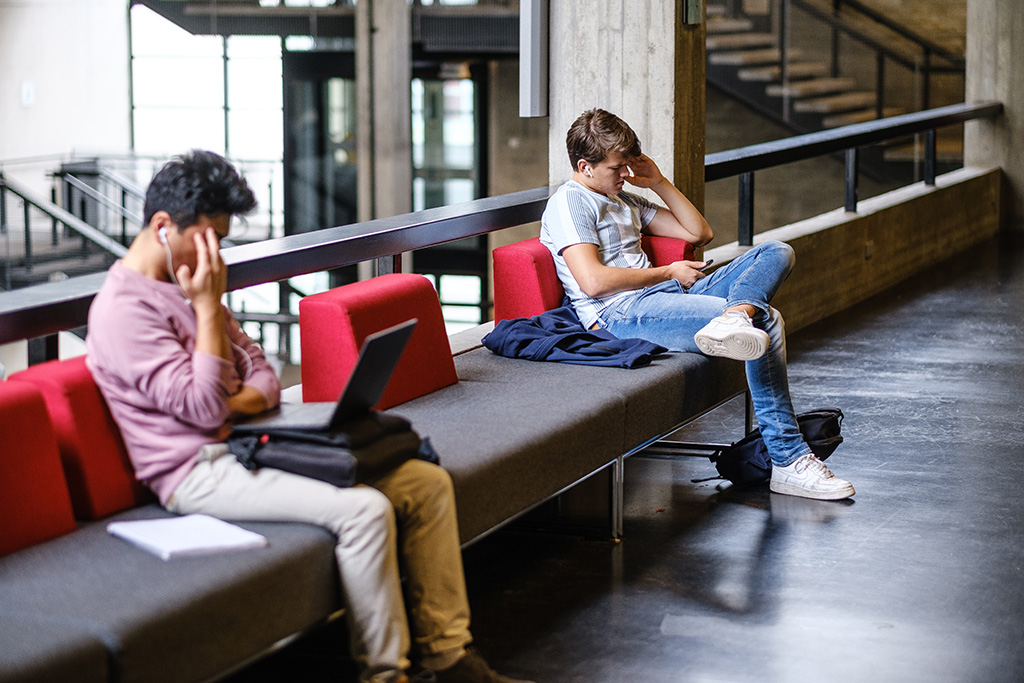
Siesling is referring to a problem the university has struggled with for years: filling vacancies for lecturers (in Dutch). This can sometimes take a long time, although it varies greatly among schools. The Tilburg School of Economics and Management (TiSEM) seems to have the most difficulty attracting new, high-quality lecturers. This is largely due to the competitive market in which it finds itself.
That recruiting lecturers for TiSEM is not easy, Jeroen Aben also remembers. He sat on the University Council in the year 2016-2017 on behalf of SAM. “It is difficult when you have to compete with foreign universities that offer double the amount. Then you, as Tilburg University, can point to your fantastic campus and your child-friendly city, but that is often not enough. That was true then and is still true now.”
The longer it takes to fill vacancies, the more current lecturers have to push themselves to the limit. This puts the ideal of small-scale, intensive education at risk. Siesling: “Smaller groups, knowing students by name, and individual feedback all sound great, but if a lecturer is on his/her last legs due to overwork that is not going to happen. There is no student well-being without lecturer well-being.”
Student/staff ratio
A much more reliable indication of intensification of education than purely financial figures is the student/staff ratio. This indicates how many students a lecturer has on average. The fewer these are, the more individual attention each student receives. If this ratio has increased over the past few years, the reasoning goes, this indicates a deterioration in educational quality.
Within Tilburg University, this is the case, according to figures (in Dutch) from umbrella organization Universities of the Netherlands. Indeed, over the period from 2015 to 2020, the student/staff ratio increased by 4.4 – from 23.6 to 28.0. This means that a full-time lecturer had to teach 4.4 more students in 2020 than in 2015. Thus, despite the large investments, Tilburg University students have been receiving less and less personal attention. Please note that this is an average for the university as a whole and, therefore, says nothing about individual programs.
The university umbrella organization only includes full, associate, and assistant professors and other lecturers as staff. Post-doctoral and PhD researchers are not included because their focus is on research. Using this definition, a comparison was also made with other Dutch universities in 2021. This showed that Tilburg University has the second highest ratio with 25 students per lecturer.
For Siesling and her fellow party members, the findings feel like recognition. “Our lecturers have been calling for years that there is a shortage, but we thought it was part of the deal. Because of this study, we know that it is less so at other institutions, and so it can be done differently. How? That is currently being investigated by the Executive Board.”
When asked, Tilburg University responds that it has always invested in hiring lecturers over the years, but that due to the robust growth in student numbers, the student-to-staff ratio “is not at a level that we strive for.” Here, indeed, the university raises an important point: massive student growth. While in 2015 there were only 12,399 students wandering around the campus, at the start of the 2021-2022 academic year, there are no fewer than 20,254 students enrolled at Tilburg University. A milestone, never before has the university had so many students.
The university’s explosive growth is primarily in the recruitment of its many international students. The proportion of international students has increased by 8.3 percentage points over the past five years to 20.9 percent. This should come as no surprise; in recent years, the university has put a lot of effort into recruitment (in Dutch) outside its own borders.
International students
A common reproach among students who lost their monthly grant is that some of the money invested was used to stimulate and accommodate growth rather than to improve their education. Resources that should have gone to their education went to making the university attractive to future (international) students.
This applies not only to the JADS already mentioned, but also to the presentation of University College Tilburg and the launch of the School of Public Governance (in Dutch), two organizational initiatives from 2016 that aimed, among other things, to bring in more (international) students. For example, a July 3, 2015 policy document states that the name change from Liberal Arts and Sciences to University College Tilburg envisioned “substantial growth” “from currently an intake of less than 100 students per year to an intake of 200 students per year.” During the pre-investments, a total of about 1.6 million euros went to both projects.
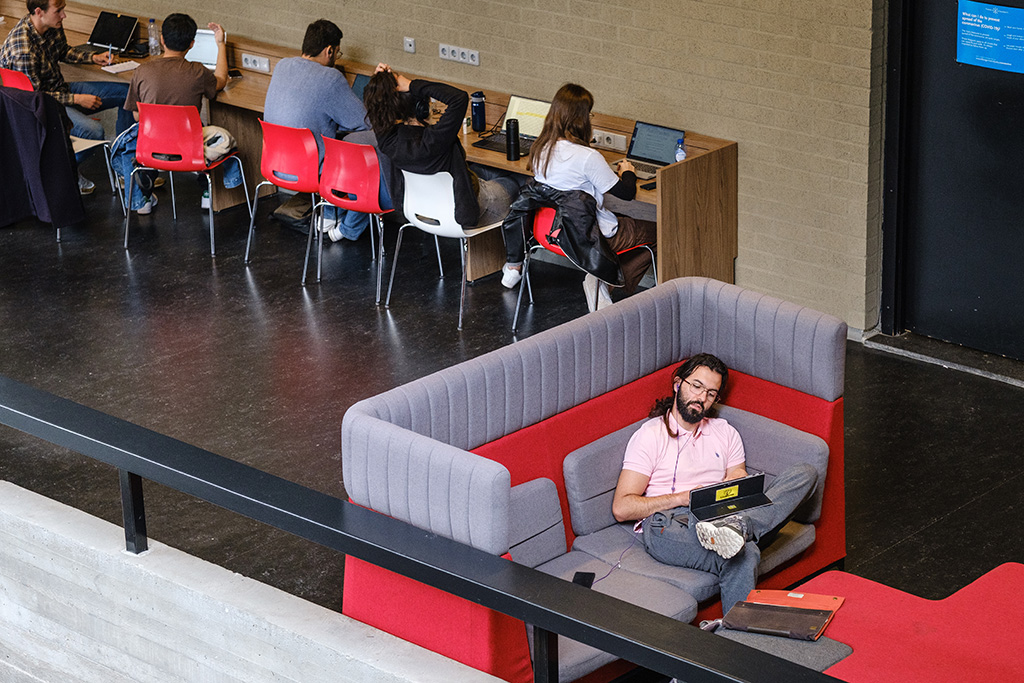
During the same period, the university also indicates that it has put money into broadening its range of programs offered. Specifically, two new programs were launched within the Tilburg School of Humanities and Digital Sciences (TSHD), including a Bachelor’s in Cognitive Science and Artificial Intelligence and a Master’s in New Media Design. Other examples can be found within the Tilburg School of Social and Behavioral Sciences (TSB), where English-taught Bachelor’s degrees in Psychology and Sociology are offered starting in 2016, and a new international Bachelor’s degree in Global Management of Social Issues has been established.
What these English-taught expansions have in common is that they were designed with the international market in mind because that is where Tilburg’s growth potential lies. Of course, because of their international nature, the study programs are also interesting options for Dutch students, but it is undeniable that increasing the range of English-taught programs has contributed to the substantial student growth of recent years.
Growth, growth, and even more growth
After an initial impetus was given to Tilburg’s expansion via the pre-investments, it will continue unabated as of 2018. This was also noticed by former Front party member Sabine Scheffer during the discussion of the Strategy 2018-2021. “We felt that, in the Strategy, the university was far too preoccupied with growth, growth, and even more growth. We then indicated that we wanted more focus on education, and that, otherwise, we would not agree to the strategic plan. Because education, that should be number one.” At the invitation of then Rector Emile Aarts, Scheffer and her fellow group members were subsequently allowed to co-write the Strategy. “We then focused on ‘sustainable growth’: growth within the university’s capacity.”
Indeed, a glance at the 2018-2022 Tasks and Resources Plan betrays that the main emphasis at this stage was also on growth. For example, it talks about “making programs more attractive” so that “students from home and abroad can be attracted and that the recently initiated growth will continue unabated.” But where the Executive Board talks about attractive education, student parties prefer to talk about better education. And that is a substantial difference.
As mentioned above, under the guise of quality improvement, a lot of money was also put into hiring lecturers. These new lecturers should ideally provide additional education on top of their regular work but in reality were used to keep up with the huge student growth.
Ellen van Gisbergen, who served on the School Council in the 2019-2020 year, saw this happen within her School TSHD. “The emphasis during Council meetings was on hiring new lecturing staff with the argument that student numbers were growing so fast. However, in our view that was not the purpose of the revenues from the student loan system. Those were meant to create a head start for students, not to equalize a deficit.”
One could even go so far as to say that the backlog has only been exacerbated by the educational investment. “Because some of the money has gone to facilitate growth, you could say that the opposite has been achieved from what was intended,” said Robin de Hoon, former Front party member. “The intention was smaller scale, but instead it is now larger scale and more massive.”
Out of the students’ own pockets
It is not surprising that Tilburg University was so eager to grow; after all, it receives money from the government per enrolled student. This is called student-related funding. It is part of the government funding that the university receives each year in the form of a lump sum. There have been voices for some time that this form of funding should be abolished (in Dutch). It would be a “perverse incentive” that drives growth too much.
An additional problem with the government contribution is that it has been declining for years. Whereas in 2002, it was about €19,500 per student, this has dropped to €15,500 in 2021. A drop of no less than 20%. Meanwhile, the revenues from the student loan system did arrive in 2018. A nice windfall for the university because this allowed the blow of the declining government contribution to be somewhat mitigated. This was also noticed by Party SAM during the December 16, 2016 University Council meeting. In it, she stated that this goes against the idea behind the revenues from the student loan system, “which now threatens to become something out of the students’ own pockets.”
According to Wienen, the same sentiment prevailed during the pre-investments: “On the one hand, money was freed up for the pre-investments, but on the other hand, the government contribution per student was decreasing. It was, therefore, mainly plugging holes, making sure that quality did not drop. Improving quality was unfortunately not in the cards.”
Vacuum
“Tell me: what does improving educational quality mean? How do you operationalize that? How can you measure it? and How do you account for it?” These are the words of Rien Wijnhoven, chair of the University Council since 2014. With these comments, he hits the nail on the head. Too little thought has been given at the national level to defining and measuring educational quality, creating a kind of vacuum that everyone fills in his/her own way.
The result is eternal debates about the educational added value of some investments. Additional study workplaces and new university buildings, for example, do they fall under educational improvement?
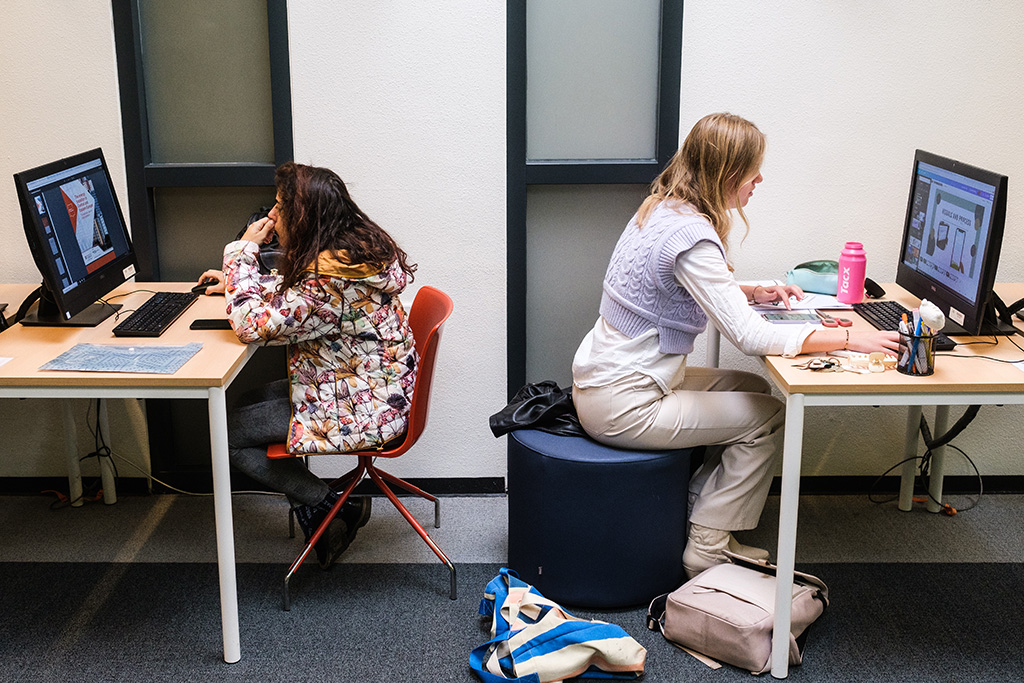
Questionable, according to De Hoon. “Investments in education should be spent on improving the quality of education, not on bricks and mortar.” Wienen, too, would rather see the money go to other things. “Quality improvement is simple: lecturers should be given enough time and resources to provide good education. It’s not that complicated.”
Aben admits that a great building does not necessarily improve education but says that in his time there was a dire need among students for more workstations. “Especially during exam times, the demand for study spaces peaked,” he says. Investments in lecture halls and housing were also approved of easily at the time. “We didn’t think it was acceptable that students had to study in poor conditions and so we addressed that,” he said.
Lack of overview
Tilburg University states that all investments made since 2015 have either led to improvements in educational quality immediately or in the slightly longer term. These investments, according to a statement, “could not have happened, or not to this extent, without the pre-investments and later the revenues from the student loan system.” Unlike the university, student representatives respond somewhat less adamantly when asked whether their education has improved.
For example, Sujin Rosie, a School Council member within the Tilburg School of Catholic Theology (TST) from 2019 to 2021, says that while a lot was put in motion, as a student, she did not reap the benefits immediately. “This is because the money was mainly deployed at the meta-level. Moreover, the university is an unwieldy apparatus that is slow to get going.” This is also agreed upon by a former School Council member within TiSEM who prefers to remain anonymous: “The university is so totally ineffective; decision-making takes years. Visible results therefore take time.”
In addition, Rosie makes an important distinction. “There is a difference between investing in improvement and experiencing something as improvement. And whether something feels like an improvement can really only be answered by the student. But this one, unfortunately, has little comparative material.”
By this, Rosie is referring to the fact that students who started college in 2015 have since graduated. Therefore, they have little idea of the level of education today. The same is true for new students who have no idea how education used to be. Both groups thus lack the overview. Scheffer concurs: “Everyone gets only part of the whole process, which basically allows administrators to do whatever they want.”
And then we have the situation around the coronavirus, which of course did not help the quality of education. One of the few spearheads of the quality agreements that flourished during this period was digitalization, which suddenly gained momentum. Small-scale and intimate education via an Internet connection logically came to nothing. It makes the whole matter around educational quality even murkier: because how are you going to compare such an exceptional situation with previous years?
To what extent education has improved, no one really seems to know. “The money is provided to the Schools, which are allowed to use it on issues that are important to them,” Siesling says. “But this makes it almost untraceable for us as a University Council. That said, we obviously trust that the funds are well spent. Moreover, extensive administration of spending would contribute to additional workload – and we are not looking for that.”
De Hoon, who has been heavily involved in the educational investments at both central and School levels, finds it telling that even he cannot judge whether educational quality has actually improved. In doing so, however, he is not suggesting that Tilburg University should put on the hair shirt. “Politics has saddled the university with this problem. They have not thought this whole plan through at all. This is demonstrated once again by the recent reinstatement of the loan system.”
Research series on Tilburg’s basic grant millions
This story is the final part of a three-part series about Tilburg’s basic grant millions. Are you curious to read more? See the other articles on quality agreements and education improvements here.
Translated by Language Center, Riet Bettonviel




